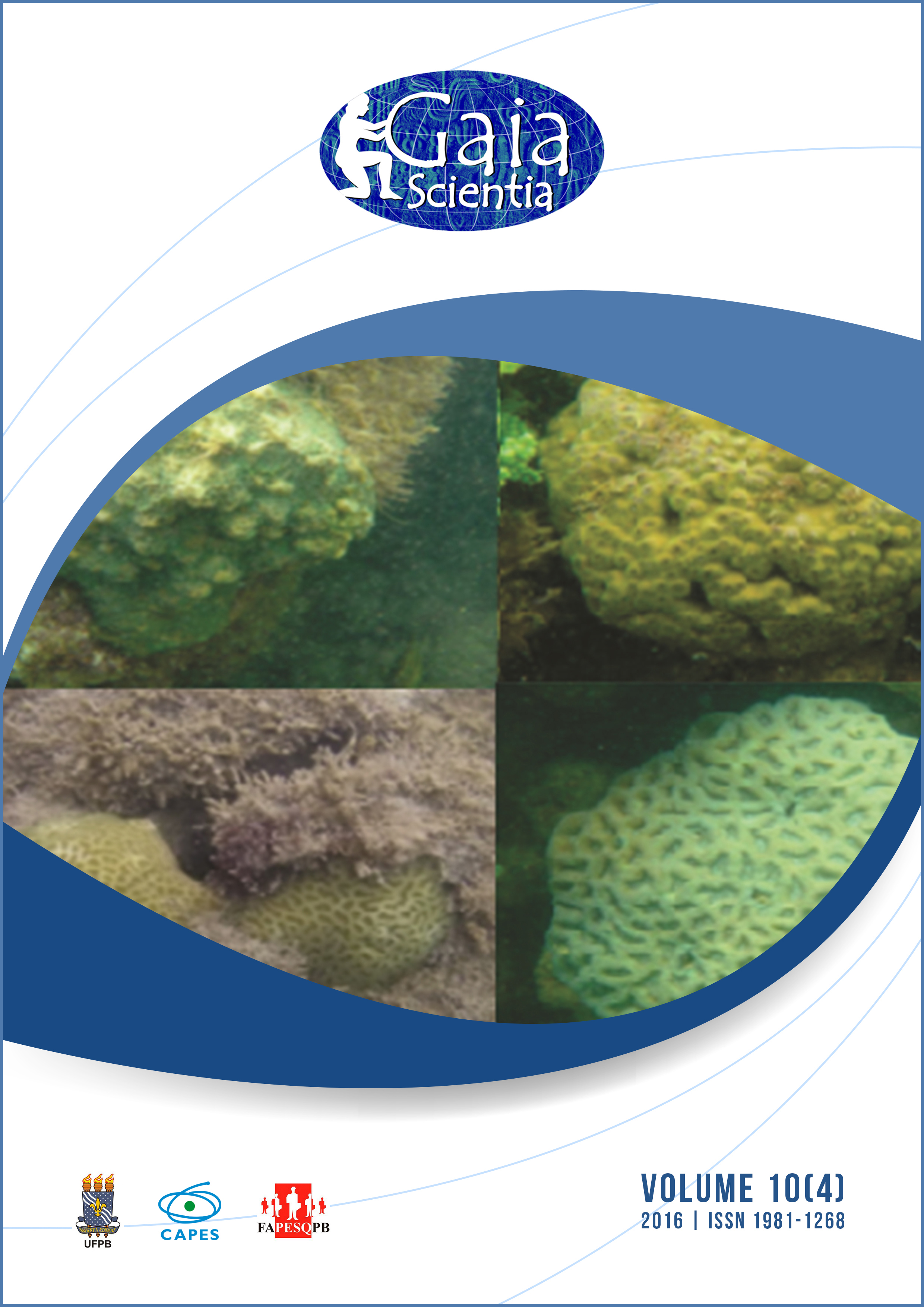COMPOSITION AND ECOLOGICAL DIVERSITY OF THE ICHTHYOFAUNA FROM THE NAMORADOS DAM, SEMI ARID REGION OF PARAÍBA, BRAZIL
Resumo
The aim of this study was to characterize the composition and ecological diversity of the ichthyofauna from the Namorados Dam, in the semi arid region of Paraíba, northeastern Brazil. Samples were collected between January 2006 and July 2007, in morning and afternoon shifts, using different fishing gear. Ecological diversity was calculated using diversity indexes of Shannon-Wiener (H'), richness (D') and evenness (J'), using the average abundance of the species. 176 individuals were collected throughout the analyzed period, being represented by 2 orders, 4 families of 5 species. With the exception of January 2006, the composition did not show specific changes, with equal predominance of the species Cichlassoma orientale and Steindachnerina notonota. Throughout the period of 2007, the prevalence was of the Order Perciformes, with dominance of the species C. orientale, which may have been caused by a population decline of Oreochromis niloticus. The lower diversity observed (H'=0,46) was due to the lower species richness (3) and the predominance of the species C. orientale in the same period. During the rainy seasons of 2006 and 2007 low diversity indexes were registered (H'=0,60 e H'=0,46) due to lower species richness (2 and 3), and dominance of O. niloticus and C. orientale. The dry season presented an average diversity of H'=0,90, which corresponds to a slight increase in species richness (5). We conclude that in this environment there is a weak annual variation in the fish assemblage, as well as in the species richness associated with seasonality of the region.Downloads
Não há dados estatísticos.
Downloads
Publicado
2016-12-30
Como Citar
MARINHO, R. S. de A.; TORELLI, J. E. R.; CRISPIM, M. C.; COSTA, D. . C. de A.; PEIXOTO, G. M.; SILVA, A. S. COMPOSITION AND ECOLOGICAL DIVERSITY OF THE ICHTHYOFAUNA FROM THE NAMORADOS DAM, SEMI ARID REGION OF PARAÍBA, BRAZIL. Gaia Scientia, [S. l.], v. 10, n. 4, 2016. Disponível em: https://periodicos.ufpb.br/ojs/index.php/gaia/article/view/34152. Acesso em: 11 abr. 2025.
Edição
Seção
Ciências Ambientais










